Accepted Scientific Name: Pediocactus peeblesianus subs. fickeisenii (Hochstätter) Lüthy
Kakteen Sukk. 50(11): 278 (1999)
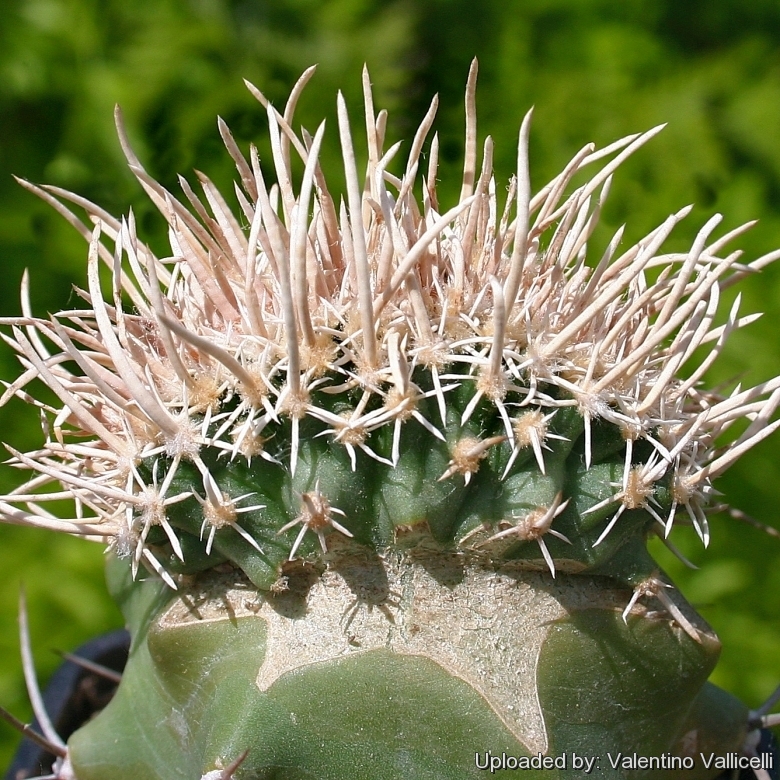
Pediocactus peeblesianus subs. fickeisenii f. cristatus Photo by: Valentino Vallicelli
Origin and Habitat: Garden origin (Nursery produced cultivar)
Synonyms:
See all synonyms of Pediocactus peeblesianus
Description: Pediocactus peeblesianusSN|11412]]SN|11412]] subs. fickeisenii is a tiny cactus of unique appearance.
This plant sometimes produces beautiful fan shaped crests of variable appearance and size with spongy creamy white spines. It is almost always seen grafted onto columnar shaped cacti.
Stems: The standard Pediocactus peeblesianusSN|11412]]SN|11412]] subs. fickeisenii globose, usually solitary, 6-7 cm tall, 5-6 cm in diameter.
Spines: Corky, spongy,soft to the touch, not obscuring the stem; a central spine 0.5-2,5 cm long, mostly 0,5 mm wide at the base, white to pale grey, ascending; radial spines 3 to 7, 0,2-1 cm long, white to pale grey, recurving.
Flowers: Rarely seen on grafted plants, up to 2.5 cm in diameter, cream, yellow or yellowish-green; outer petals pink or green with a darker mid-strip; stamens yellow; stigma yellow.
Flowering time: Open during the day, blooms in spring.
Subspecies, varieties, forms and cultivars of plants belonging to the Pediocactus peeblesianus group
 Pediocactus peeblesianus (Croizat) L.D.Benson: has white to pale grey corky/spongy, and flexible not obscuring the stem.Central spine: (3-)4 (rarely 6), of oftene flattened into a Maltese cross arrangement. Radial spines: 3-7 per areole. Distribution: Navajo County, Arizona.
Pediocactus peeblesianus (Croizat) L.D.Benson: has white to pale grey corky/spongy, and flexible not obscuring the stem.Central spine: (3-)4 (rarely 6), of oftene flattened into a Maltese cross arrangement. Radial spines: 3-7 per areole. Distribution: Navajo County, Arizona. Pediocactus peeblesianus subs. fickeisenii (Hochstätter) Lüthy: Has longer and thinner corky/spongy, white to pale grey spines. Central spine: 1-4 stout, wormlike, curved, ascending 0,5-2,5 cm long. Radial spines: 3 to 7. Distribution: Grand Canyon Area, Arizona.
Pediocactus peeblesianus subs. fickeisenii (Hochstätter) Lüthy: Has longer and thinner corky/spongy, white to pale grey spines. Central spine: 1-4 stout, wormlike, curved, ascending 0,5-2,5 cm long. Radial spines: 3 to 7. Distribution: Grand Canyon Area, Arizona. Pediocactus peeblesianus subs. fickeisenii f. cristatus hort.: crested form.
Pediocactus peeblesianus subs. fickeisenii f. cristatus hort.: crested form. Pediocactus peeblesianus f. maius (Hochstätter) Hájek: is a controversial forms of Pediocactus peeblesianus that should actually be regarded as non-existent (nomen nudum) because is based on a juvenile form of another taxon (Echinocereus fendleri).
Pediocactus peeblesianus f. maius (Hochstätter) Hájek: is a controversial forms of Pediocactus peeblesianus that should actually be regarded as non-existent (nomen nudum) because is based on a juvenile form of another taxon (Echinocereus fendleri). Pediocactus peeblesianus f. menzelii Hájek: has radial and central (rarely all radial) soft corky or spongy, "fatter" than in the ptype, white to pale grey and sometimes 0-1 intermediate spines per areole. Distribution: Coconino County, Arizona
Pediocactus peeblesianus f. menzelii Hájek: has radial and central (rarely all radial) soft corky or spongy, "fatter" than in the ptype, white to pale grey and sometimes 0-1 intermediate spines per areole. Distribution: Coconino County, Arizona
Bibliography: Major references and further lectures
1) Edward F. Anderson “The Cactus Family” Timber Press, 2001
2) Curt Backeberg “Cactus Lexicon” Sterling Publishing Company, Incorporated, 1978
3) David Hunt, Nigel Taylor “The New Cactus Lexicon” DH Books, 2006 ISBN 0953813444, 9780953813445
4) James Cullen, Sabina G. Knees, H. Suzanne Cubey “The European Garden Flora Flowering Plants: A Manual for the Identification of Plants Cultivated in Europe, Both Out-of-Doors and Under Glass” Cambridge University Press, 11/Aug./2011
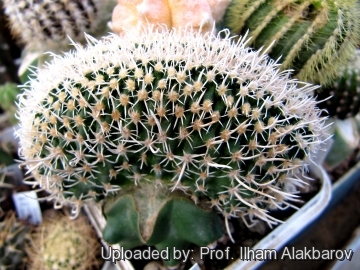 Pediocactus peeblesianus subs. fickeisenii f. cristatus Photo by: Prof. Ilham Alakbarov
Pediocactus peeblesianus subs. fickeisenii f. cristatus Photo by: Prof. Ilham Alakbarov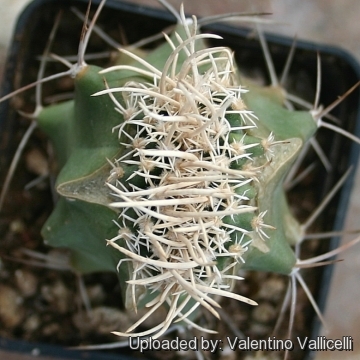 Pediocactus peeblesianus subs. fickeisenii f. cristatus Photo by: Valentino Vallicelli
Pediocactus peeblesianus subs. fickeisenii f. cristatus Photo by: Valentino Vallicelli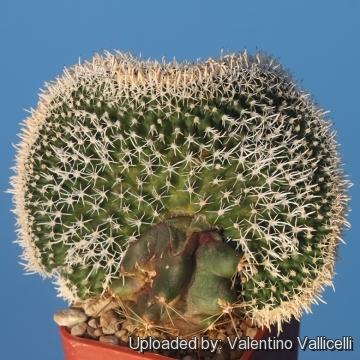 Pediocactus peeblesianus subs. fickeisenii f. cristatus Photo by: Valentino Vallicelli
Pediocactus peeblesianus subs. fickeisenii f. cristatus Photo by: Valentino Vallicelli Pediocactus peeblesianus subs. fickeisenii f. cristatus Photo by: Valentino Vallicelli
Pediocactus peeblesianus subs. fickeisenii f. cristatus Photo by: Valentino Vallicelli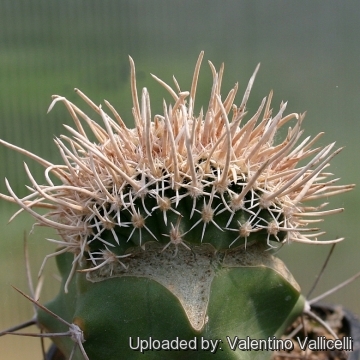 Pediocactus peeblesianus subs. fickeisenii f. cristatus Photo by: Valentino Vallicelli
Pediocactus peeblesianus subs. fickeisenii f. cristatus Photo by: Valentino Vallicelli Pediocactus peeblesianus subs. fickeisenii f. cristatus Photo by: Valentino Vallicelli
Pediocactus peeblesianus subs. fickeisenii f. cristatus Photo by: Valentino Vallicelli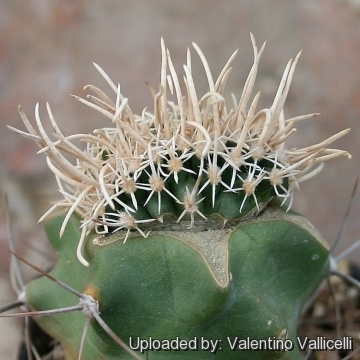 Pediocactus peeblesianus subs. fickeisenii f. cristatus Photo by: Valentino Vallicelli
Pediocactus peeblesianus subs. fickeisenii f. cristatus Photo by: Valentino VallicelliSend a photo of this plant.The gallery now contains thousands of pictures, however it is possible to do even more. We are, of course, seeking photos of species not yet shown in the gallery but not only that, we are also looking for better pictures than those already present.
Read More... Cultivation and Propagation: Very rot prone and very difficult to grow from it's own roots in cultivation; best and easy if grafted on a short hardy stocks.
Potting substrate: Needs a very well drained mineral substratum with little organic matter (peat, humus).
Exposition: These plant tolerate extremely bright situations but are likely to suffer from sun scorch or stunted growth if over exposed to direct sunlight during the hottest part of the day in summer.
Hardiness: It is very frost hardy, above approx -12° C (down to - 20 if kept completely dry). In the rest period no high atmospheric humidity!! Ensure a good ventilation.
Moisture: Waterings should be rather infrequent, to avoid that the plants become excessively elongated and unnatural in appearance. Use Water sparingly from March till October and keep perfectly dry in winter, or when night temperatures remain below 10° C.
Crested growth: Unlike 'monstrose' varieties of plants, where the variation from normal growth is due to genetic mutation, crested growth can occur on normal plants. Sometimes it's due to variances in light intensity, or damage, but generally the causes are unknown. A crested plant may have some areas growing normally, and a cresting plant that looks like a brain, may revert to normal growth for no apparent reason. If you have any of the crested part left you need to remove the normal growth and leave the crested part behind this will need to be done regularly.
Propagation: Grafting or cuttings. Plants are usually grafted onto column-shaped cacti but proved to be able to produce their own roots if degrafted. Cuttings will take root in a minimum temperature of 20° C (but better in hot weather). Cuttings of healthy shoots can be taken in the spring and summer. Cut the stem with a sharp, sterile knife, leave the cutting in a warm, dry place for a week or weeks (depending on how thick the cutting is) until a callus forms over the wound. Once the callus forms, the cutting may be inserted in a container filled with firmed cactus potting mix topped with a surface layer of coarse grit. They should be placed in the coarse grit only; this prevents the cut end from becoming too wet and allows the roots to penetrate the rich compost underneath. The cuttings should root in 2 to 6 weeks. Large crested piece must be placed on the soil surface without burying the plant base down in the soil.


















